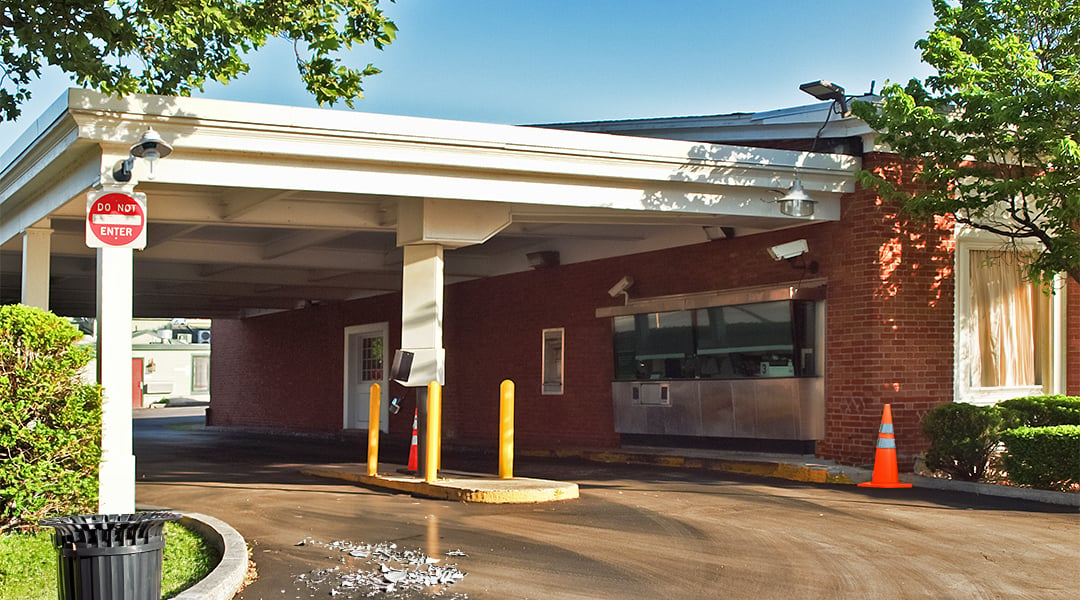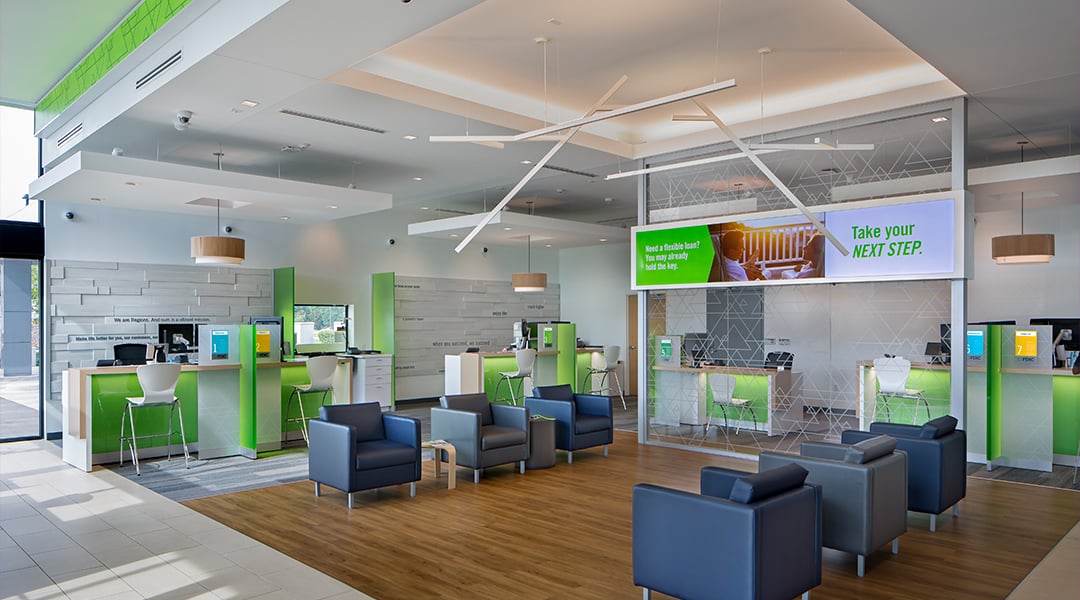Telltale Signs Your Bank Branch Needs a Refresh and How to Respond
Not too long ago, uncertainty hovered over bank branches. Were they relevant in a digital age? Then technology itself provided a clear answer: Yes, bank branches matter.
But their development and improvement require holistic thinking about diverse and evolving customers and how to meet their wants and needs. Also critical is a disciplined plan for the execution of renovations that are scaled precisely for a variety of footprints. Yet still localized. Oh, and completed on-time and on-budget.
The good news is there are telltale signs that your bank branch needs a refresh.

Data says a branch is valuable. Your eyes say, “Ouch”
Say a thoughtful exploration of your customers as well as location data shows a branch is valuable. What’s next? Don’t just check a box and move on.
Go and walk the branch and review strengths and weaknesses and areas that need upgrades. If the branch hasn’t been renovated in a decade, chances are some needs will be obvious and those will provide insights into similar branches across the country.
First, you’ll notice some straightforward issues.
- Exterior signage and ATMs: Sign faces are broken or discolored. Illumination is inconsistent or failing. Is there consistent branding throughout? And does the branch look like it is closed from the outside?
- Entrance and drive-through areas: Signs are faded, peeling or missing. Fixtures are broken or missing. The windows are still framed with your grandparents’ curtains.
- Lobby, teller lines and offices: Merchandising fixtures are aged and discolored. Wall covering or paint is peeling or chipping. Artwork is out of date and doesn’t represent the brand. The deposit slip slots in your check writing desks include spider webs.
Some of this might sound flippant. It is and isn’t. If you’ve spent the past several years touring bank branches across the country, as many at Miller Zell have, you’ll see much that is outdated, dilapidated, irrelevant and, well, a little cringe.
The first step toward solving a problem is admitting it exists. The next is thinking holistically about solutions.

Your branches don't meet today’s standards for branding and technology
The era of crowded branches featuring posters, take-one brochures and buck slips is over.
You may find more than a few branches are misaligned with your current brand image or designed for the bygone era of heavy traffic teller transactions versus customers wanting private interactions focused on financial advice and guidance.
It’s, therefore, time to ask three questions:
- Is there consistent branding throughout your branch system?
- Do your branches support the customer journey as it is now?
- How do you use technology to create an omnichannel experience that engages customers wherever they are?
Branding isn’t an FDIC plaque in your (now-faded) brand color or walls adorned with framed staff diplomas and compliance training certificates. It’s about updated logos, colors, décor, messaging and digital screens that are purposeful, appealing and instantly recognizable as on-brand.

Regions Bank branch, located in Germantown, Tenn., upgraded for branding, digital integration and customer experience.
Your branch experience doesn't value in-person, brick-and-mortar banking
Survey after survey says that customers still want the option to make in-person trips to bank branches, and this is led — perhaps surprisingly — by younger customers.
Yet dark offices, empty teller lines and an overcrowding of merchandising floor fixtures suggest it’s time to reevaluate your customer experience. What do today’s customers want from the branch? And how can you deliver the experience they want and build brand trust?
A lot of this is about digital integration serving the in-person experience as much as replacing some traditional banking tasks. Technology isn’t digital screens that look like TVs and feature weather maps or redundant videos. It’s about engaging your customers with useful content and boosting your brand.
Further, each branch is unique, sometimes in subtle ways. Connecting a bank and its surrounding community is important, and localization efforts can feature a wide range of customized touches. These could include an entire wall that pays tribute to a beloved, nearby sports venue and its neighborhood, or it could focus on a customized set of branch art options that are reminiscent of the brand and its colors. Or local imagery that can be stylized as art.
But, you might think, doesn’t localization complicate scaling? It could. But there’s a solution for that, too.
There is a lack of ownership for your branch branding solutions
If your branch development programs are still described as “merchandising” and not “branding,” a Point A for change has revealed itself.
A first step is creating a clear owner of the in-branch experience. That person and their team then create a holistic plan for improving branding and the customer and associate experience.
Therein lies the localization solution. That holistic plan includes finding partners that can both scale and meet branch-by-branch needs for a diversity of locations, regions and footprints. It’s important to know before a program advances whether vendors can create, deliver and even install customized modular kits of parts that support both localization and customized branding while also staying within a predetermined budget.
"...Just like retail, it's about continual innovation that keeps up with customers' wants and needs."
Further, brand standards demand consistency in logo and color usage. A formalized branch playbook ensures branches are delivered as a consistent brand medium, while also allowing for
customized solutions for a wide variety of branch types that focus on different customers and their diverse wants and needs.
Predictions of the decline of brick-and-mortar retail were misguided. The same goes for bank branches. They are still valuable and necessary. But, just like retail, it’s about continual innovation that keeps up with customers’ wants and needs.
The future of banking is a hybrid model that offers integrated in-person and digital options. Strategically understanding that hybrid experience and translating it to your branch design and renovations with optimized digital and human touchpoints will distinguish your brand and foster customer loyalty.